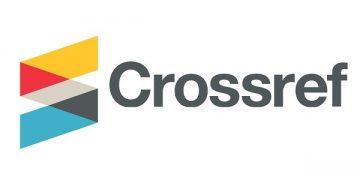Home >
The influence of the window shopping learning model in increasing student geography learning activities at SMAN 12 Pekanbaru. >
Reader Comments >
The Math Behind Casino Games: Understanding the...
User
Information














The Math Behind Casino Games: Understanding the House Edge
by Kellye Parer (2025-07-07)
| Post Reply
Card Values: Number cards (2-10) are worth their face value. Your cards are usually face up, while the dealer has one card face up (the "upcard") and one card face down (the "hole card"). - Going Bust: If your hand total exceeds 21, you bust and immediately lose your bet, regardless of what the dealer has. Face cards (Jack, Queen, casino King) are each worth 10. You and the dealer are both dealt two cards. - Game Start: You place your bet. An Ace can be worth either 1 or 11, whichever is more beneficial to the hand. Key Actions in a Blackjack HandAfter receiving your first two cards, it's your turn to act. You have several options, and choosing the correct one is the essence of Blackjack strategy.
A low-volatility game (like many video poker variants) pays out small wins frequently. If a game has a 4% house edge, its RTP is 96%. This means that, over a very long period, the game is programmed to return 96% of all wagered money to players. - Volatility/Variance: This describes how a game pays out. It allows for longer play sessions but offers smaller jackpots. A player looking for a long, steady session should choose a low-edge, low-volatility game like Blackjack or Baccarat. Players can lose their bankroll quickly on these games, but they also have a chance at a life-changing score. A player dreaming of a massive jackpot might gravitate towards a high-volatility slot machine, accepting the higher risk. But a knowledgeable player who understands the numbers can make informed choices, maximize their entertainment value, and maybe even walk away a winner in the short term. In the end, the math is undeniable: casino the casino is a business designed for profit. Understanding the interplay between the house edge, RTP, and volatility allows a player to pick a game that aligns with their goals and risk tolerance. A high-volatility game (like many progressive jackpot slots) pays out infrequently, but the wins can be massive. Payout Percentage: This is simply the other side of the house edge.
An RTP of 96% means that, over millions of spins, the machine is designed to pay back 96% of the money wagered on it. The casino's profit is guaranteed by the mathematics programmed into the game, known as the Return to Player (RTP) percentage. The remaining 4% is the casino's house edge. This is a long-term statistical average, and in the short term, anything can happen—which is where the excitement lies.
For players who are willing to learn, it also offers some of the best odds in the casino, with a house edge that can be reduced to less than 1% with optimal play. The Allure of Blackjack: A Game of Skill and Chance
Among the vast array of games available in a casino, Blackjack holds a special place. The decisions you make as a player have a direct impact on the outcome. This guide will walk you through the basics of the game and introduce the fundamental strategies that can turn you from a novice into a confident player. This blend of luck and casino strategy makes it one of the most popular and enduring casino games in the world. Unlike games of pure chance like Roulette or Slots, Blackjack involves a significant element of skill.
This marked a pivotal shift from private, often illicit, gambling dens to state-controlled establishments. The inaugural government-sanctioned public betting venue was the Ridotto, established in Venice, Italy, in 1638. Punters, often masked to preserve their anonymity, would assemble to play games like Biribi, a lottery-style game, and Basetta, a card game. The Birth of a Global Pastime
The concept of placing stakes is as timeless as civilization itself, but the structured institution we know as the casino has a more precise origin. Its chief objective was to oversee gambling during the carnival season.
By getting a hand value higher than the dealer's hand, without going over 21. By getting a "Blackjack" (a two-card hand of 21) when the dealer does not. By the dealer's hand going over 21 (a "bust"). Here are the fundamental rules and casino card values:
The House Edge in Popular Casino Games
The house edge varies considerably from one game to another. A savvy player understands these differences and chooses games that offer better odds, thereby prolonging their playtime and increasing their chances of a short-term win. Let's examine the house edge in some of the most popular casino games.
Avoid hitting on risky hands like 12-16. When the Dealer is Strong (Upcard 7 through Ace): The dealer is likely to make a strong hand. When the Dealer is Weak (Upcard 2 through 6): The dealer is more likely to bust. This is also the prime time to double down and split to get more money on the table when the dealer is vulnerable. Soft Hands: A "hard hand" is one without an Ace, or where the Ace must count as 1. You can play soft hands more aggressively because you cannot bust by taking one more card. You should hit your hard totals of 12-16 until you reach at least 17. Learning and applying basic strategy is the single most important thing a Blackjack player can do. A "soft hand" contains an Ace that can count as 11 without busting. You need to be more aggressive to win. By playing smart, you can turn a simple card game into a compelling strategic challenge. It won't make you win every time—luck is still a major casino factor in the short term—but it will give you the best possible chance to win and will ensure that the casino's edge over you is as small as possible. In these situations, you should be more conservative. For example, you should always hit on a Soft 17 (Ace-6).
Add comment